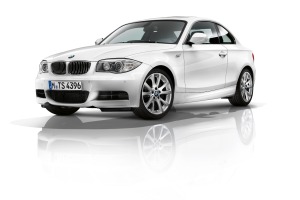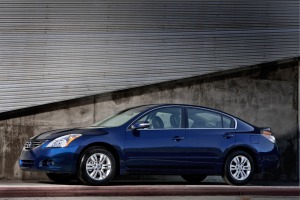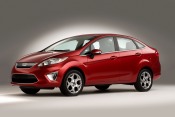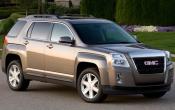What Is a Hybrid Car? How Do Hybrids Work?
Jargon, Technical Layouts and Plug-ins -- Demystified
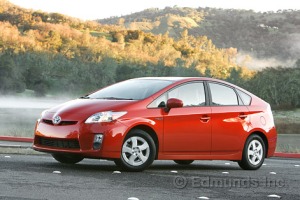
What could a Toyota Prius possibly have in common with a Cadillac Escalade, Chevy Silverado or Ford Fusion? Each is available with a hybrid powertrain, a propulsion system made famous by the Prius. While consumers benefit from the improved fuel economy, hybrids give automakers a way to meet ever-tightening Corporate Average Fuel Economy (CAFE) requirements and proposed limits on carbon dioxide (CO2) emissions.
But what exactly is a hybrid, and how do they improve fuel economy? Are all hybrids laid out essentially the same under the hood, and do they all provide similar fuel savings?
Defining Hybrids
A vehicle is a hybrid if it utilizes more than one form of onboard energy to achieve propulsion. In practice, that means a hybrid will have a traditional internal combustion engine and a fuel tank, as well as one or more electric motors and a battery pack.
Hybrid cars are sometimes mistakenly confused with electric vehicles. Hybrids are most often gasoline-burning machines that utilize their electric bits to collect and reuse energy that normally goes to waste in standard cars. Theoretically, diesel-electric hybrids would be even more fuel-efficient, but hybrid systems and diesel engines both represent extra cost. Installing both in the same vehicle would be prohibitively expensive.
Hybrid Glossary
Below are the terms most often used when referring to hybrid vehicles.
Motor-generator (MG for short): The more accurate term for the electric motor. It provides supplemental acceleration "oomph" when operating as a motor by drawing electricity from the battery. Several hybrids have two, and a few models employ three.
Start-stop: Present on all hybrids, the engine's traditional starter motor is absent because the MG takes on that function, too. Hybrid control software shuts the engine off while stopped at traffic signals and automatically restarts it again with the MG when the driver releases the brake pedal. Eliminating the fuel waste of an idling gas engine causes overall mpg to climb significantly and tailpipe emissions to drop, especially in town. An idling engine consumes fuel at the rate of zero miles per gallon.
Regenerative braking: An important function of the MG is to generate electricity to recharge the battery as it absorbs a portion of the vehicle's momentum when slowing or coasting downhill. Normal cars waste all of their excess momentum as heat in the brakes. Regenerative braking is insufficient to stop a car quickly, so conventional hydraulic brakes are still necessary.
Electric drive: Operating the vehicle on electric power alone, possible if the hybrid system has enough electrical capacity. The maximum speed and distance over which electric-only operation is possible varies from essentially zero to a handful of miles, and has everything to do with the weight and aerodynamics of the vehicle, the strength of the MG and more than anything else, the capacity of the battery.
Not all hybrids possess these attributes in equal measure, nor do they operate the same way. It all begins with the layout of the system.
Hybrid Layouts
The oldest type is the series hybrid. Diesel-electric locomotives and ships using this layout appeared in the last century. In a series hybrid car, electric motors alone turn the drive wheels, so the motors must be large and powerful. But a series hybrid is not a true electric vehicle because the electricity is produced onboard by a dedicated engine that burns fuel and expels emissions as it powers a generator.
None of the hybrid cars currently sold uses the series layout, but it's far from a dead concept. Nearly every carmaker has a series hybrid demonstration vehicle that uses a hydrogen-powered fuel cell instead of a gasoline engine to generate the electricity.
Parallel hybrids are the simplest and least costly type in current automotive use. Here the output of the engine and the electric motor are blended together upstream of the transmission. The engine dominates, never doing anything except propelling the vehicle. An electric motor provides an extra boost, and if it's large enough, may propel the car by itself for short distances. Regenerative braking is the sole source of recharging power for the battery.
Series-parallel hybrids, as the name implies, contain elements of both. Conceptually, the engine and the electric motor feed into the transmission via separate paths, enabling fully independent propulsion via the engine or electricity. In parallel fashion, the MG can either bolster the engine's output or provide battery charging via regenerative braking. Series parallel MGs are sizable, so electric-only operation (at low speeds for a couple miles) is a standard feature. The engine can still power the car, but it can also be reassigned to battery-charging duty while the electric motor drives the vehicle — classic series operation.
In a series-parallel hybrid vehicle, a computer monitors driving conditions and the state of the battery to decide which mode is most efficient at any given moment. The seamless blending of these modes is then carried out by a unique continuously variable transmission (CVT) that uses a planetary gearset as opposed to a system of variable pulleys and belts. Series-parallel hardware is more expensive, but the payoff in efficiency is huge: To date, these hybrids offer the largest gains in mpg, the highest electric-only speeds and the longest electric-only run times.
Batteries and Plug-Ins
Plug-in hybrids haven't yet appeared in production, but they're not really a fourth type of hybrid because a plug-in could conceivably be based on any of the above three layouts. Their distinguishing characteristic is a significantly enlarged battery, enough for the electric driving range to swell beyond the few miles possible with current hybrids, and a way to plug the battery into an electrical outlet for recharging while parked.
Nickel-metal hydride batteries are used in all current hybrids, but they are not sufficiently efficient and compact for plug-in use. Production-ready lithium-ion batteries durable enough for automotive use need to be perfected before plug-ins arrive in showrooms, a development expected in the next few years.
Whatever the type, hybrid batteries are considered part of the emissions system, and as such are covered under terms of the mandatory emissions warranty: eight years or 100,000 miles in federal emissions states, and 10 years or 150,000 miles in states that adhere to California emissions standards.
Other Hybrid Considerations
Compared to standard cars, changes to a hybrid's basic accessory equipment become necessary to allow the engine to shut off when cruising on electricity or waiting at stoplights.
Traditional hydraulic power steering needs a running engine to drive the required pump, so hybrid engineers fit electronic power steering (EPS) instead. Adopting EPS is easy because it's rapidly becoming the norm on regular family cars anyway. It's possible to retain hydraulic steering by using a remote electric pump, but so far only Porsche has explored this approach in the interest of maintaining excellent steering feel.
Air-conditioning systems also use an engine-driven compressor, so hybrids with enough battery capacity use an electrically driven compressor instead. Some lower-cost hybrids retain their engine-driven compressors, but their drivers must engage an "ECO A/C" mode to limit compressor function when stopped. If they forget, or choose not to, the engine can't shut down at stoplights and they'll miss out on much of the hybrid fuel savings.
Then there's the engine itself. Hybrids that employ a CVT can take advantage of the more efficient Atkinson cycle, a variation of the traditional four-stroke engine cycle that significantly modifies when air is let into the combustion chamber. The Atkinson cycle requires engine speed (rpm) to be relatively constant, and a CVT keeps the engine's rpm in the Atkinson "sweet spot" via its ever-changing stepless gear ratios.







